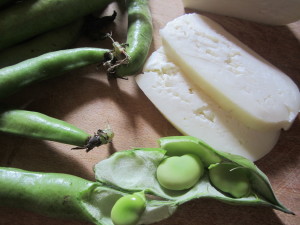 I just love the way the word “jam” sounds. Jam. Sam. I’m on the lam. We had a discussion this past week in my culinary tour group on the difference between preserves, jams and jellies. According to an expert in our group, preserves are made with whole fruit, jams are cut up fruit, and jellies are just the juice. I cook a lot of fruit in season, combining the whole or halved fruit with sugar and lemon and cooking it until it’s thick. Some might call what I do “preserves, but I like to call it jam.
I just love the way the word “jam” sounds. Jam. Sam. I’m on the lam. We had a discussion this past week in my culinary tour group on the difference between preserves, jams and jellies. According to an expert in our group, preserves are made with whole fruit, jams are cut up fruit, and jellies are just the juice. I cook a lot of fruit in season, combining the whole or halved fruit with sugar and lemon and cooking it until it’s thick. Some might call what I do “preserves, but I like to call it jam.
In Tuscany the middle of June means cherries and it is a season all to short for me. We have several different varieties, some are almost black when ripe and all of them are plump and juicy. They’re the perfect snack, a slight crunch as your teeth break the skin, then a burst of sweet tart juice that explodes in your mouth. I love cherries too.
Since today was my first day off in a month and tomorrow begins another week before I’ll be able to call any time my own, I thought it would be a good idea to make cherry jam. My sister Mary, who is in Italy working with me this month, looked at me like I was nuts and said “Are you sure you have time to do that?” I replied, “If not now, when?” I can’t imagine cherry season ending before I’m able to capture the deliciousness of them into jars. We can enjoy them months later on vanilla ice cream and I’m sure my culinary group this week will appreciate them on toast for breakfast!
So here’s how you make cherry jam: Pit your cherries, weigh them and use half that amount of sugar. I had a kilo of cherries so I used half a kilo of sugar. Put the fruit and sugar in a large pot with a heavy bottom. Peel half a lemon into strips and put the peel in the fruit, then squeeze the juice of a whole lemon over all. Stir and place on a low fire. As it heats, the fruit gives up juice and it becomes very liquidy. Bring to a slow boil and allow it to cook until the liquid becomes thicker. Be careful not to burn it or allow it to boil over, that’s a mess to clean up.
You know it’s done when a small amount of the juice on a plate is thick and sticky after you’ve blown on it to cool it off. Then just spoon it into jelly jars that have lids with good seals on the inside. You don’t need to process the jars, the sugar and acidity of the fruit preserve it. Put the lid on tight and as the jam cools it forms a vacuum seal and you’re good to go.
Our season for fruit is underway. The strawberries finished in May, making way for cherries and mulberries in June followed quickly by apricots. We look forward to lots of peaches and plums all summer long, finishing with figs in September. Rest assured. I’ll be making my whole-fruit jam for a while.





